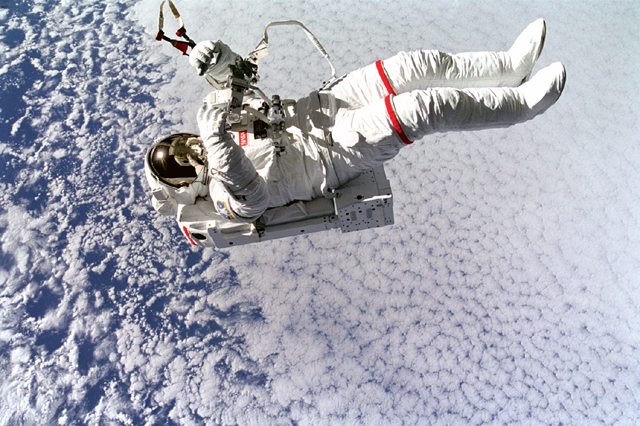Space History Photo: Mark Lee Tetherless and Free

In this historical photo from the U.S. space agency, astronaut Mark C. Lee floats freely, backdropped against clouds 130 nautical miles below, without tethers as he tests the new Simplified Aid for EVA Rescue (SAFER) system on September 16, 1994.
When astronauts are in orbit, it's often said they're weightless and there's no gravity. But of course there is gravity. What's really going on is they are falling sideways as they fall toward the planet, a setup that keeps them in orbit and feeling weightless.
Each weekday, SPACE.com looks back at the history of spaceflight through photos (archive).
Get the Space.com Newsletter
Breaking space news, the latest updates on rocket launches, skywatching events and more!
Join our Space Forums to keep talking space on the latest missions, night sky and more! And if you have a news tip, correction or comment, let us know at: community@space.com.

The National Aeronautics and Space Administration (NASA) is the U.S. government agency in charge of the civilian space program as well as aeronautics and aerospace research. Founded in 1958, NASA is a civilian space agency aimed at exploring the universe with space telescopes, satellites, robotic spacecraft, astronauts and more. The space agency has 10 major centers based across the U.S. and launches robotic and crewed missions from the Kennedy Space Center in Cape Canaveral Florida. It's astronaut corps is based at the Johnson Space Center in Houston. To follow NASA's latest mission, follow the space agency on Twitter or any other social channel, of visit: nasa.gov.









